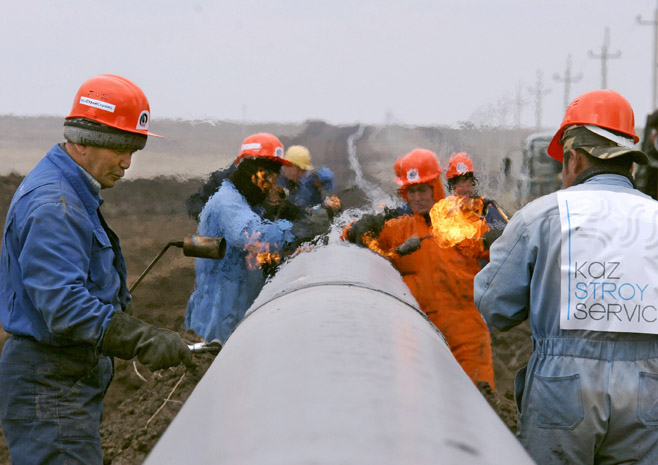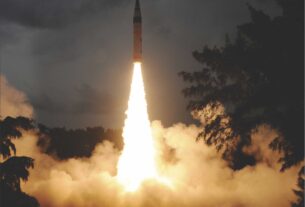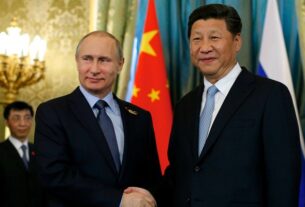China’s quest for expanding into western region and Central Asia
Lenin’s theory that imperialism is driven by capitalist surpluses seems to hold true for China’s adventure into the Western region and Central Asian nations where China plans Belt and Road Initiative and dozens of bilateral economic projects in coming years.
This is primarily to exploit Central Asia’s energy resources – oil, natural gas, uranium – are the cake for an economy which is slowing down at a faster pace. China needs these resources to fuel its economic growth and Beijing is seeking them everywhere in the world.
But why send oil tankers half way around the world when numerous pipelines, railways, and roads are being constructed in Central Asia, largely with Chinese money.
All that can bring oil, gas, uranium, and various minerals from Central Asia to China. And the Chinese loans that the Central Asian governments are accepting to develop their oil and gas fields and build the infrastructure needed to export these resources to China are in fact pre-payment for goods to be received later.
For example, China has loaned Turkmenistan more than $10 billion to develop the massive Galkynysh gas fields and build the pipelines from the field. Some gas from Galkynysh will eventually go to China and the first $10-billion worth would not earn Turkmenistan any money as Ashgabat will be paying back the loan.
Energy resource
Some might say China is sucking Central Asia dry of its resources. But what options do the Central Asian states have? Who else can purchase Central Asia’s oil and gas?
To the south Afghanistan cannot pay, Iran already has oil and gas, and to the north so does Russia.
Any of the Central Asian states, those that have oil or gas, would be glad to export to Europe. The problem is that most export routes to Europe pass through Russia, a legacy from their days as part of the Soviet Union.
Kazakhstan, the oil baron of Central Asia, is an example of the sort of obstacle that creates.
Kazakhstan produced some 82 million tons of oil 2013, and roughly one-third of that was exported via the Caspian Pipeline Consortium pipeline that runs through Russia. That leaves some 54 million tons.
Recently, Kazakhstan renewed a deal with Azerbaijan that in 2014 allows some 4 million tons of Kazakh oil to be exported to Europe, most via the Baku-Tbilisi-Ceyhan pipeline, one of those few routes to Europe.
Kazakhstan does have an oil swap deal with Iran. International sanctions on Iran have led to a reduction in how much oil Kazakhstan sends across the Caspian Sea to northern Iran in return for a like amount at Iranian Persian Gulf ports.
But, some months ago, a top official at the state company KazMunaiGaz (Vice President Daniyar Berlibayev) said at its peak the volume reached only 3.5 million tons. That leaves somewhere around 48 million tons of oil, far more than domestic needs.
For Turkmenistan, with the world’s fourth largest gas reserves, the situation has been even worse. For most of the 1990s, before the pipeline to Iran was completed, Turkmenistan shipped its gas via Soviet-era pipelines through Russia to Ukraine, Georgia, and Armenia, the customers Moscow and a transit company selected (while Russian gas went to European countries).
Ukraine’s debt to Turkmenistan was regularly in the hundreds of millions of dollars; the three countries combined sometimes owed Turkmenistan $1 billion, and those were the days when the cost of gas was about $50 per 1,000 cubic meters, not the $400 it costs many countries now.
So with limited potential paying consumers at the moment, the prospect of one day soon selling some 65 billion cubic meters to China is difficult to pass up (China only pays Turkmenistan about $195 per 1,000 cubic meters). And for Kazakhstan and Uzbekistan the prospect is equally sweet and immediate.
Turkmenistan gets something else from its relationship with China.
Major investor
Some have raised eyebrows when noticing that the China National Petroleum Corp is the only foreign company to have a much-coveted onshore contract to develop a Turkmen field — the Bagtyyarlyk (Happiness) field, with estimated gas reserves of some 1.3 trillion cubic meters (that’s enough to fill all the European Union’s gas needs for about two years).
It is also located on the sliver of Turkmenistan that lies on the east side of Amu-Darya, generally speaking, Uzbekistan’s side.
Central Asia is a region of ill-fitting borders drawn by Soviet mapmakers. A river would be an easy way of dividing two countries. But with Chinese workers at Bagtyyarlyk, Uzbekistan, with roughly six times the population of Turkmenistan, is unlikely to press a claim.
China definitely has influence in Central Asia as, currently, the major investor in the region. But it is nearly all due to China’s self-interest, what China can get, that is driving this investment.
That is pretty much where Chinese interest ends.
For instance, there is no Chinese investment in construction of hydropower projects in Kyrgyzstan and Tajikistan (though Chinese companies are working on power transmission lines and electric substations in both countries).
There is potential for profit for any investor in Central Asian hydropower, but the electricity Kyrgyzstan and Tajikistan don’t use is already destined to go to customers in Afghanistan and on the subcontinent.
A half decade ago it appeared China was gaining some military clout in Central Asia when the Shanghai Cooperation Organization was conducting large joint military exercises.
But Russia saw this and for the last few years has been building the presence of the CIS Collective Security Treaty in Central Asia. Moscow has secured long-term deals for military bases in Kyrgyzstan and Tajikistan is about to essentially rearm the militaries of those two countries.
In any case, Beijing has enough worries with its Muslim Uighur population in the Western Xinjiang Region, just across the mountains from Central Asia. It is unlikely China would want to have the roughly 50 million Muslims in Central Asia in its sphere of political influence right now.
What about the Chinese workers coming to Central Asia?
Indeed, China’s western frontiers and its central Asian neighbours are home to vast reserves of oil and gas.
Economic diplomacy
The Xinjiang region, sitting on some of China’s largest energy reserves and crucial to the Silk Road project, is also home to a restive Muslim Uighur population that is culturally Turkish, far poorer than the citizens of coastal China and seeking a break with Beijing. The region has been the scene of serious outbreaks of violence in recent years.
If the sum total of China’s commitments are taken at face value, the new Silk Road is set to become the largest programme of economic diplomacy since the US-led Marshall Plan for postwar reconstruction in Europe, covering dozens of countries with a total population of over 3bn people.
The scale demonstrates huge ambition. But against the backdrop of a faltering economy and the rising strength of its military, the project has taken on huge significance as a way of defining China’s place in the world and its relations — sometimes tense — with its neighbours.
Trade between China and the five central Asian states — Kazakhstan, Kyrgyzstan, Tajikistan, Turkmenistan and Uzbekistan — has grown dramatically since 2000, hitting $90bn in 2016, according to the International Monetary Fund.
China now wants to build the roads and pipelines needed to smooth access to the resources it needs to continue its development.
The increasing number of Chinese merchants opening stalls at Central Asian bazaars is a reason for concern, as it could spark local conflicts, same with the Chinese farmers in Tajikistan.
As for Chinese in Central Asia working at oil and gas fields or building roads, the Chinese government and Chinese companies also have to find work for their people.
And the Chinese government can easier keep track of budgets and timetables with its own people at the sites, though especially in Kazakhstan there have been problems because of Chinese oil workers being paid more than their Kazakh counterparts.
Irredentists in China have produced maps that lay claim to huge areas of the Asian continent and it is possible this ancient and patient people have territorial acquisition plans that they see being realized sometime four or five generations in the future.
Central Asia has a finite amount of energy resources and, given current export plans and projects, four or five generations in the future it might not look so attractive to China anymore.




